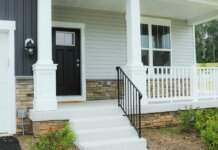The risk of mortgage fraud increased 7.3% in the first quarter compared with a year earlier, according to Cotality’s latest National Mortgage Application Fraud Risk Index.
However, the risk of mortgage fraud was down 0.3% compared with the fourth quarter.
The “transaction risk” category saw the most significant year-over-year increase at 4.6%. Transaction risk applies to applications where elements of a home purchase transaction were not fully represented to the lender. Hidden sales concessions, non-arm’s length sales, and rapid property flipping are examples.
“While mortgage delinquencies are currently low across the U.S., the market is ripe for an increase in fraud because of the continuing high interest rates, slow housing market, and other increasing costs of homeownership like insurance affordability,” says Matt Seguin, senior principal, fraud solutions, at Cotality, in a statement. “If market conditions continue to challenge sellers, risks like misrepresented down payments, inflated prices, and straw buyers could increase dramatically.”
Albany, N.Y. and Poughkeepsie, N.Y. saw the highest quarter-over-quarter increase in mortgage fraud risk.
Overall mortgage application volume was flat compared with the fourth quarter.
Purchase share remains high at 67% of transactions.
As was the case in the fourth quarter, the share of government-backed loans increased again, from 24% to 26% of applications.
There were moderate increases in fraud risk in the following categories:
- Income: High income relative to time on the job and/or for the geographic area.
- Transaction: Alerts on purchase transactions with multiple high-risk elements are trending up, such as inconsistent property value relative to the borrower’s age or depreciating markets
- Occupancy: Increased alerts that a primary or secondary home will not be occupied as disclosed.
- Property: Higher levels of alerts for values in the higher ranges of geographic areas and properties being resold within one year of a prior transaction.
The number of owner-occupied properties listed for rent within the last 180 days increased by 50%, the largest quarter-over-quarter increase; however, other indicators point to stabilized occupancy risk.
Photo: Aryan Dhiman











